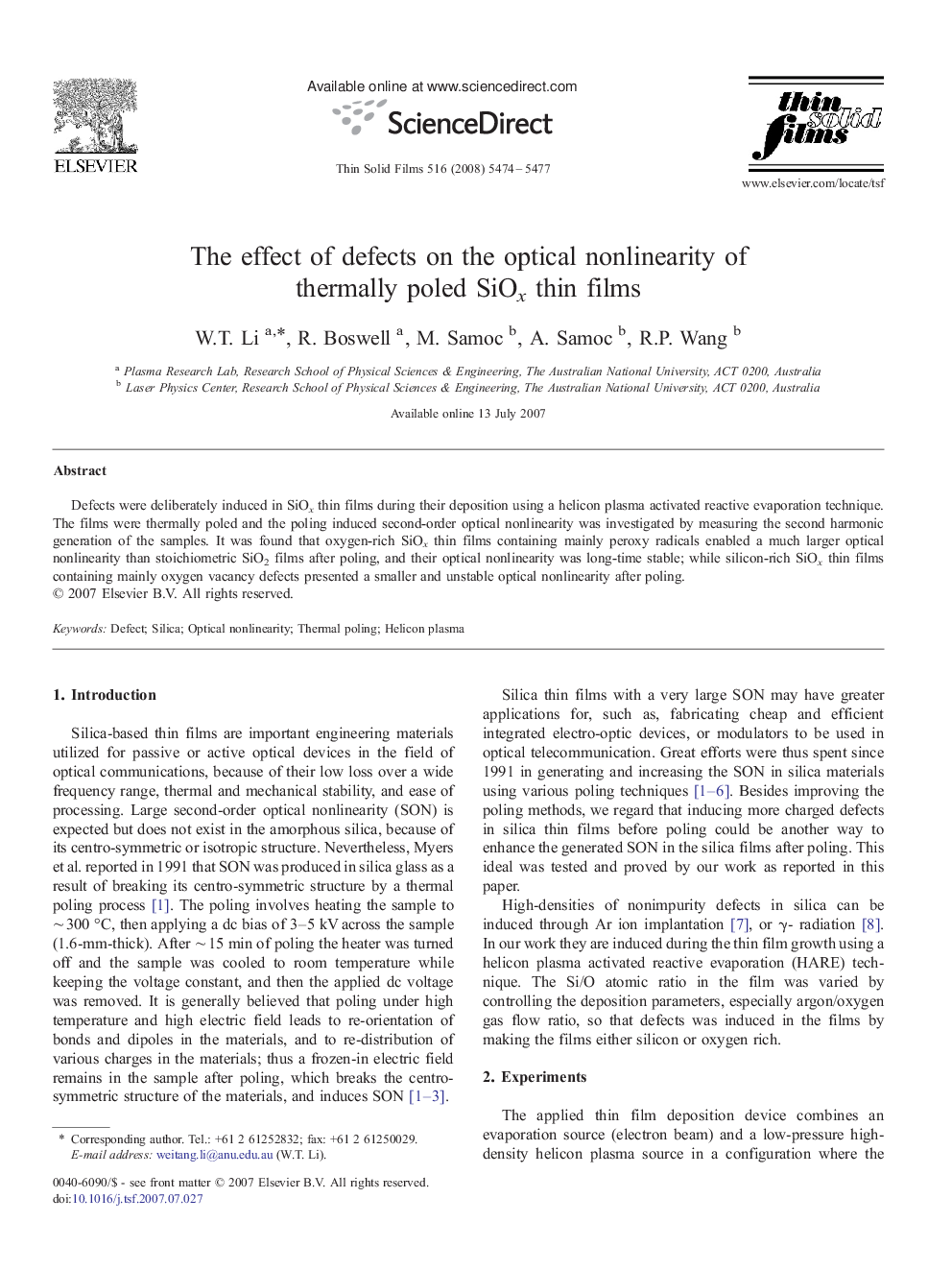| Article ID | Journal | Published Year | Pages | File Type |
|---|---|---|---|---|
| 1674974 | Thin Solid Films | 2008 | 4 Pages |
Abstract
Defects were deliberately induced in SiOx thin films during their deposition using a helicon plasma activated reactive evaporation technique. The films were thermally poled and the poling induced second-order optical nonlinearity was investigated by measuring the second harmonic generation of the samples. It was found that oxygen-rich SiOx thin films containing mainly peroxy radicals enabled a much larger optical nonlinearity than stoichiometric SiO2 films after poling, and their optical nonlinearity was long-time stable; while silicon-rich SiOx thin films containing mainly oxygen vacancy defects presented a smaller and unstable optical nonlinearity after poling.
Related Topics
Physical Sciences and Engineering
Materials Science
Nanotechnology
Authors
W.T. Li, R. Boswell, M. Samoc, A. Samoc, R.P. Wang,
